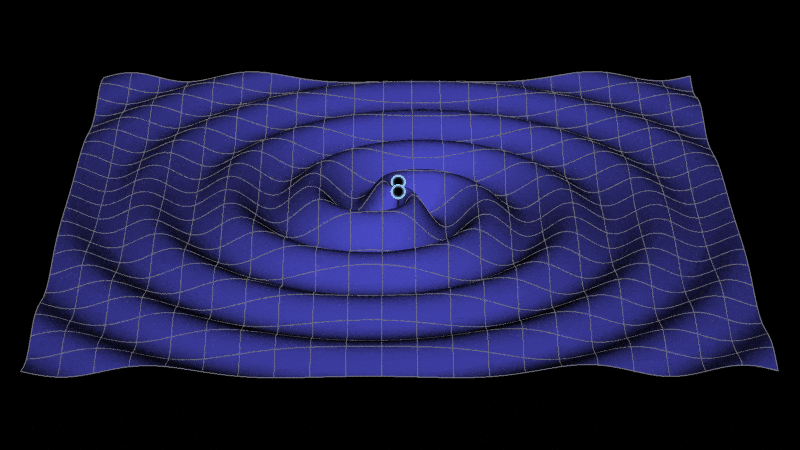Scientists announced this morning that they have detected gravitational waves—final proof of Einstein’s theory of relativity.
Physicists at two Laser Interferometer Gravitational-Wave Observatories (LIGOs) detected the waves on September 14, 2015. They were created by the collision of two humongous black holes—each 30 times the mass of our sun—about 1.3 billion light years away.
Like light and sound, gravity travels in waves. When massive objects collide they send out ripples in the fabric of space—a bending of space and time. Drawn in by each other’s gravity, the objects spiral towards collision, and the increasing frequency of their waves produces a “chirp” sound. (You can listen to the chirp here). Last fall, when the wave passed through Earth, this caused the planet to briefly expand and contract by less than the width of an atom.
Einstein predicted gravitational waves as part of the theory of general relativity, which states that gravity is the same as the space time continuum. The discovery of gravitational waves not only confirms Einstein’s theory, it widely expands the study of black holes. This is the first time black holes have been directly detected. Furthermore, the size of the black holes involved in this collision is unusual, and indicates that they may be the remainders of some of the first stars born in the universe.
